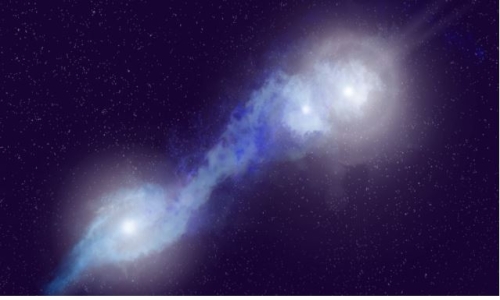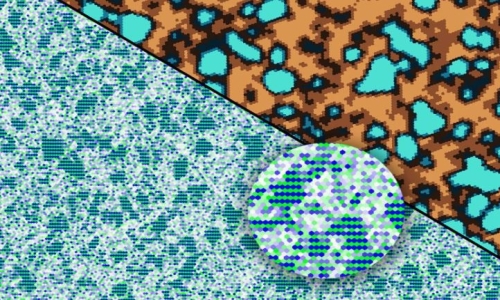


 8:24:59
8:24:59  2019-03-09
2019-03-09  1139
1139

For part of the summer in parts of Antarctica, the ice melts into a swampy, slushy stew and refreezes as the temperatures rise and fall. As it melts, it generates hundreds of thousands of tiny little "icequakes."
Now, scientists have captured the daily pattern of these miniature tremors using the same kind of seismographs used to detect earthquakes. They find that the icequakes are caused by the sudden snap of frozen films of ice covering pools of slush.
"In these ponds, there's often a layer of ice on top of melted water below, like you see with a lake that's only frozen on top," University of Chicago glaciologist Douglas MacAyeal said in a statement. "As the temperature cools at night, the ice on the top contracts, and the water below expands as it undergoes freezing. This warps the top lid, until it finally breaks with a snap."
Breaking up
MacAyeal and his team were interested in the daily rhythms of the ice because little is known about the mechanics of a breakup of a large ice sheet. Such breakups have occurred in Antarctica multiple times over the past several decades. The Larsen C ice shelf calved an enormous iceberg into the Weddell Sea in 2017. The nearby Larsen B shelf collapsed unexpectedly in 2002. When floating ice sheets collapse, they don't directly contribute to sea-level rise, because they were already in a marine environment. But they do allow the landbound glaciers behind the ice sheets to flow faster, dumping meltwater into the sea. [In Photos: Antarctica's Larsen C Ice Shelf Through Time]
The researchers were also interested in testing seismometers as a way to monitor melting ice. They deployed two near McMurdo Station, at the edge of the McMurdo Ice Shelf. One seismometer station was positioned at a dry location where the surface was covered with firn — previous years' snow slowly hardening and compacting into glacial ice. The other was put at a wet, boggy location where the ice was rotten and partially melted. At the wet location, the surface was often coated with a thin layer of ice over pools of slush and meltwater big enough to swallow an adult.
The instruments recorded tremors at these two stations between November 2016 and January 2017.
Snaps and pops
The patterns at the two spots couldn't have been any more different. The dry station was seismically peaceful. The only tremors detected there were linked to vehicle or ship traffic around McMurdo Station.
At the wet station, though, the seismographs picked up hundreds of thousands of tiny earthquakes, sometimes thousands in one night. These quakes were generally below the 2.5 magnitude at which tremors become noticeable to humans, though people in Antarctica sometimes hear the cracking of the ice, according to the U.S. Geological Survey. Strangely, the earthquakes followed a daily pattern. They would increase in frequency for a couple of hours each evening.
The researchers thought the daily quake peaks might have to do with the tides, but one discrepancy ruled out that notion. On Nov. 30, 2016, the spike in icequakes didn't happen. When the researchers tracked daily temperature over the study time frame, they found that the quake peaks corresponded with periods of dropping mercury. On Nov. 30, it just so happened that the temperature warmed instead of chilled over the course of the evening.
What's likely happening, MacAyeal said, is that as the air gets colder, the slushy, melty ponds below the thin layer of surface ice start to freeze. As they freeze, they expand, putting pressure on the surface ice. Finally, the surface ice snaps like a potato chip, sending tiny, undetectable-to-humans tremors out along the surface.
These findings on a small scale are intriguing, MacAyeal said, because more icebergs calve off ice shelves during cold weather compared with warmer weather.
"Perhaps this is happening at longer, slower scales," he said.
By Stephanie Pappas, Live Science
Reality Of Islam |
|

Some 1.2 bi

A tiny robo

By applying
 9:3:43
9:3:43
 2018-11-05
2018-11-05
10 benefits of Marriage in Islam
 7:5:22
7:5:22
 2019-04-08
2019-04-08
benefits of reciting surat yunus, hud &
 9:45:7
9:45:7
 2018-12-24
2018-12-24
advantages & disadvantages of divorce
 11:35:12
11:35:12
 2018-06-10
2018-06-10
 6:0:51
6:0:51
 2018-10-16
2018-10-16
 8:19:41
8:19:41
 2018-06-21
2018-06-21
 2:2:13
2:2:13
 2022-10-08
2022-10-08
a hero waters thirsty wild animals
 9:4:9
9:4:9
 2022-01-06
2022-01-06
 4:2:19
4:2:19
 2022-10-10
2022-10-10
 11:11:59
11:11:59
 2023-02-01
2023-02-01
 3:42:22
3:42:22
 2021-12-24
2021-12-24
 10:43:56
10:43:56
 2022-06-22
2022-06-22
 5:41:46
5:41:46
 2023-03-18
2023-03-18
| LATEST |